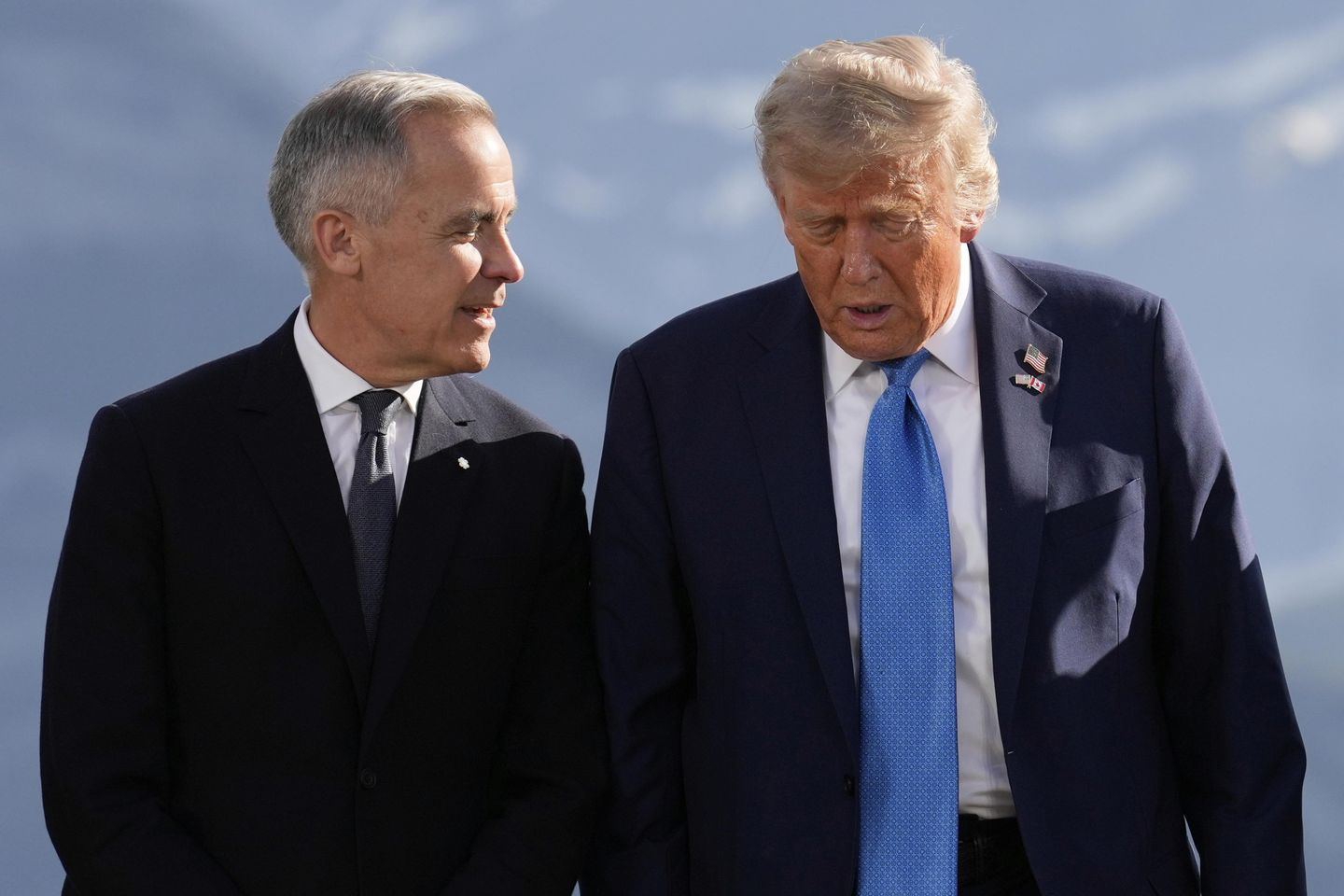
President Trump says he is cutting off trade talks with Canada because Ottawa is imposing a digital services tax on U.S. tech companies.
Mr. Trump’s decision, outlined Friday on Truth Social, is an abrupt turnabout in relations with the United States’ northern neighbor and close trading partner.
“We will let Canada know the Tariff that they will be paying to do business with the United States of America within the next seven-day period,” Mr. Trump wrote.
Mr. Trump signaled there was little Canada could do about his decision, except for canceling the tax. He said the U.S. market has the upper hand in trade.
“We have all the cards,” he said later in the Oval Office.
Canada appeared to be copying the European Union, which also angered the administration by imposing a tax that will hit companies such as Google, Meta and Amazon.
The Canadian tax was passed last year and is retroactive to 2022. The first taxes are set to be collected on Monday.
The tax charges 3% of digital services revenue above $14.6 million that a company brings in from Canadian users in a given year.
“Based on this egregious Tax, we are hereby terminating ALL discussions on Trade with Canada, effective immediately,” Mr. Trump wrote.
It was not immediately clear how Canadian Prime Minister Mark Carney would respond. The Washington Times reached out to his office for comment.
Mr. Trump’s decision marks another rift between the U.S. and its longtime ally.
Mr. Trump and Mr. Carney had been relatively cordial of late, exchanging handshakes at the White House and during the Group of Seven summit in Alberta, Canada.
Yet Mr. Trump’s been willing to stir the pot with Canadian leaders since the start of this year. He said Canada is so reliant on the U.S. that it should become the 51st state.
He also imposed a 25% tariff on Canadian imports, though many goods are exempt under the U.S.-Mexico-Canada Agreement reached during Mr. Trump’s first term.
Already, Canadian producers are grappling with a 50% tariff that Mr. Trump imposed on steel and aluminum products that enter the U.S. and a 25% tariff on cars and car parts.
Mr. Trump’s latest threat suggests Canadian goods will be subject to some form of blanket levy with no space for negotiations.
More broadly, the president on Friday said it would be impossible to negotiate with every trading partner and he is ready to assign tariff levels to specific countries.
“We’re gonna send out a letter, and we’re just going to tell them what they have to pay to do business in the United States,” Mr. Trump said Friday, adding countries like India might strike last-minute deals.
The Trump administration struck a deal in principle with the U.K. that opened British markets to U.S. farm goods and other products in exchange for some tariff relief for the British side.
The U.S. and China also have a framework to encourage dialogue on deep trade issues. Both countries took steps this week to implement the deal, in which China will send rare earth minerals to the U.S. in exchange for relief on tech-export controls.
Yet other deals haven’t been forthcoming, raising questions about whether the administration would eke out pacts, grant an extension or assign tariffs.
Mr. Trump, speaking at a White House press conference, said he’s ready to name a tariff number for most nations.
“Some will be disappointed because they’re going to have to pay tariffs,” he said.
Tariffs are taxes or duties paid by importers on the goods they bring in from foreign markets.
Mr. Trump says tariffs are a great way to force companies to return to America or keep their operations in the U.S., employ American workers and create revenue to fund domestic programs. He said many companies are investing billions of dollars in the U.S. to avoid tariffs.
Foreign countries don’t pay the tariffs directly to the U.S. Treasury. In many cases, U.S. companies will pay the levies, and they might pass on at least some of the cost to consumers through higher prices.
Some U.S. companies have announced price increases, citing tariffs, but doomsday scenarios haven’t come to pass. The tariffs may start to bite later this year, depending on their ultimate levels.
Mr. Trump has repeatedly pointed to the billions in revenue that tariffs bring into the U.S. Treasury. He also wants to leverage tariffs to close trade deficits, or situations in which countries sell plenty of products to American consumers but don’t buy nearly as much from U.S. producers.
“Some countries … are used to ripping us off, to be honest with you,” Mr. Trump said.
The president has singled out the EU, calling them especially difficult to work with on trade despite the historical ties between the European bloc and the U.S. He’s also willing to tangle with Canada despite close trade ties.
Canada and the U.S. did $762 billion worth of trade with each other in 2024, according to the Office of the U.S. Trade Representative. Canada was the top destination for U.S. exports and the third-largest source of U.S. imports.
Canadians reacted angrily to Mr. Trump’s aggressive approach to trade and started a “Buy Canada” campaign to stir national pride. The uproar also fueled an unlikely election victory for Mr. Carney and his Liberal Party this year.
In the U.S., meanwhile, some organizations applauded Mr. Trump for his tough stance on the digital services tax.
“This tax unfairly singles out American firms while local competitors skate by,” said John Czwartacki, co-founder and principal of Public Policy Solutions, which advocates for American prosperity and free markets. “Whether it’s Brussels or Ottawa, President Trump is right to call them out and force this to change.”












